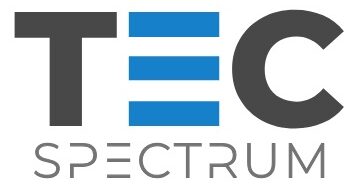For the first time, astronomers have observed a solar system birth around the young star HOPS-315 in the Orion Nebula, located 1,300 light-years from Earth. This groundbreaking discovery provides a rare glimpse into the earliest stages of planet formation, offering clues about how our own Solar System formed billions of years ago. Using advanced telescopes, scientists have detected key processes that mark the beginning of a new cosmic system.
In this article, we’ll dive into the significance of this solar system birth, the technology behind the discovery, and its implications for understanding the universe.
What is HOPS-315?
HOPS-315 is a baby star, similar to our Sun in its youth, situated in the Orion Nebula. It is surrounded by a protoplanetary disc—a swirling ring of gas and dust where planets begin to form. The observation of a solar system birth around HOPS-315 provides a unique opportunity to study the early stages of planetary development.
Key Facts About HOPS-315
- Location: Orion Nebula, 1,300 light-years from Earth
- Star Type: Young, Sun-like star
- Significance: Hosts a protoplanetary disc showing early signs of planet formation
How Planets Form in a Solar System Birth
Planets emerge within protoplanetary discs, where gas and dust particles collide and clump together. These clumps grow into planetesimals—kilometer-sized building blocks that eventually become planets. A critical component in this process is crystalline minerals containing silicon monoxide, which serve as the foundation for planet cores.
Steps in Planet Formation
- Dust and Gas Clumping: Tiny particles in the disc stick together.
- Planetesimal Formation: Clumps grow into kilometer-sized bodies.
- Planet Development: Planetesimals merge to form planets like Earth or Jupiter.
Around HOPS-315, astronomers detected crystalline minerals solidifying in a region of the disc similar to our Solar System’s asteroid belt. This observation marks the earliest stage of a solar system birth ever recorded around a star other than our Sun.
Technology Behind the Solar System Birth Discovery

This milestone in observing a solar system birth was made possible by two state-of-the-art telescopes:
- James Webb Space Telescope (JWST): Identified chemical signatures of crystalline minerals in HOPS-315’s disc.
- Atacama Large Millimetre/submillimetre Array (ALMA): Located the precise region of these minerals, confirming their role in planet formation.
Operated by the European Southern Observatory (ESO) and international teams, these telescopes provide unparalleled insights into distant cosmic phenomena.
“We’re seeing a system that looks like what our Solar System looked like when it was just beginning to form,” said Merel van’t Hoff, co-author of the study from Purdue University.
Why This Solar System Birth Matters
The observation of a solar system birth is more than a scientific marvel—it’s a key to unlocking our own cosmic origins. Studying HOPS-315 helps scientists understand how Earth, Jupiter, and other planets in our Solar System came to be. Here’s why this discovery is significant:
- Insights into Earth’s Beginnings: The processes around HOPS-315 mirror those that likely formed Earth.
- Advancing Astronomy: This finding refines our understanding of planet formation and solar system evolution.
- Guiding Future Missions: Insights from this solar system birth could shape future exoplanet research.
For more on cosmic discoveries, explore our article on exoplanet discoveries or visit the European Southern Observatory’s official site for in-depth research.
What’s Next for Studying Solar System Births?
This discovery paves the way for further research into solar system births. Astronomers plan to:
- Track HOPS-315: Monitor the evolution of its protoplanetary disc.
- Investigate Other Stars: Search for similar solar system birth processes in other systems.
- Enhance Telescope Capabilities: Use JWST and ALMA to detect fainter signals of planet formation.
Lead author Melissa McClure from Leiden University noted, “For the first time, we have identified the earliest moment when planet formation is initiated around a star other than our Sun.” This breakthrough sets the stage for deeper cosmic exploration.
Conclusion: A New Chapter in Understanding Solar System Births
The observation of a solar system birth around HOPS-315 is a historic achievement, offering a front-row seat to the processes that created our own world. With advanced telescopes like JWST and ALMA, astronomers are unraveling the mysteries of planet formation and reshaping our view of the universe.
CTA: Captivated by the solar system birth discovery? Subscribe to our newsletter for more space science updates or check out our guide on the James Webb Space Telescope to explore the tech behind this breakthrough. Share your thoughts in the comments below!












